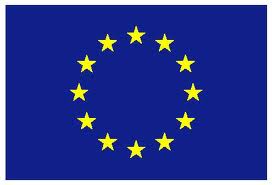Until recently, merger control was the main consideration for M&A transactions in Europe: dealmakers only had to consider merger control approvals at the European Union (EU) and national levels.
After a couple of years characterised by strong geopolitical tensions marked by the coronavirus (COVID-19) crisis and then Russia’s invasion of Ukraine, M&A in Europe is now facing increased merger control and regulatory scrutiny in the following three key areas.
First, merger control enforcement has become more expansive and more aggressive. Second, deals are now subject to multiple national reviews under the newly adopted or updated foreign direct investment (FDI) regimes across the EU and the UK. Third, the EU Foreign Subsidies Regulation (FSR) adds a third layer of regulatory scrutiny for certain large transactions.
In this article we provide a brief overview of each of these three trends and we conclude with some key considerations for dealmakers both on the public M&A and private equity fronts.
More aggressive merger control enforcement
The European Commission (EC) and the UK Competition and Markets Authority (CMA) have become increasingly aggressive in their jurisdictional reach and their merger enforcement.
Unprecedented jurisdictional reach. On the jurisdictional front, the EC can now assert jurisdiction over any transaction, even when the target does not realise any revenues in the EU. This major jurisdictional expansion was endorsed by the EU General Court in the seminal Illumina, Inc. vs EC case, where the General Court upheld the EC’s decision to assert jurisdiction over an acquisition in which the target had zero sales in the EU. In practical terms this judicial endorsement gave the EC unfettered power to assert jurisdiction over any transaction. Under its new guidance the EC will not apply this expanded reach in an indiscriminate way, but will instead focus on transactions raising so-called killer acquisition or innovation concerns, primarily in the tech and pharma sectors. The EU’s General Court judgment is still subject to appeal by Illumina, but until and unless the Illumina judgment is reversed on appeal, the EC will continue to have the power to assert jurisdiction over any transaction regardless of whether the target has sales in the EU or not.
The UK Competition and Markets Authority (CMA) has also taken an equally expansive approach on jurisdiction. In the Meta/Giphy acquisition, the CMA asserted jurisdiction even though the target had zero revenues in the UK, and blocked the deal. The CMA asserted this jurisdictional overreach through an overly expansive interpretation of the 25 percent “combined firm share of supply” test, which the CMA considered met even though Giphy had zero UK sales.
Aggressive substantive enforcement. In recent years, there has been an increasing concern in the EU that merger underenforcement has led to the creation of oligopolistic market structures that ultimately lead to less innovation and higher prices for consumers. This has led to more aggressive merger enforcement by the EC, based primarily on horizontal theories of harm, and a very expansive interpretation of the non-coordinated effects theory of harm. Under this theory, a merger can still lead to anticompetitive effects if it softens competition between the combined firm and the remaining market players, even if the combined firm is not the leading market player post-merger.
In parallel, the EC has been increasingly focused on the reduction of innovation competition as a standalone theory of harm. The trend started with the 2017 Dow/Dupont merger decision, where the EC applied the innovation theory of harm in a horizontal context. In that case, the EC assessed the competitive effects of the merger on innovation at the level of the industry as a whole and at “innovation spaces”, which were not properly defined markets but rather areas of innovation efforts where the parties were close and important competitors.




